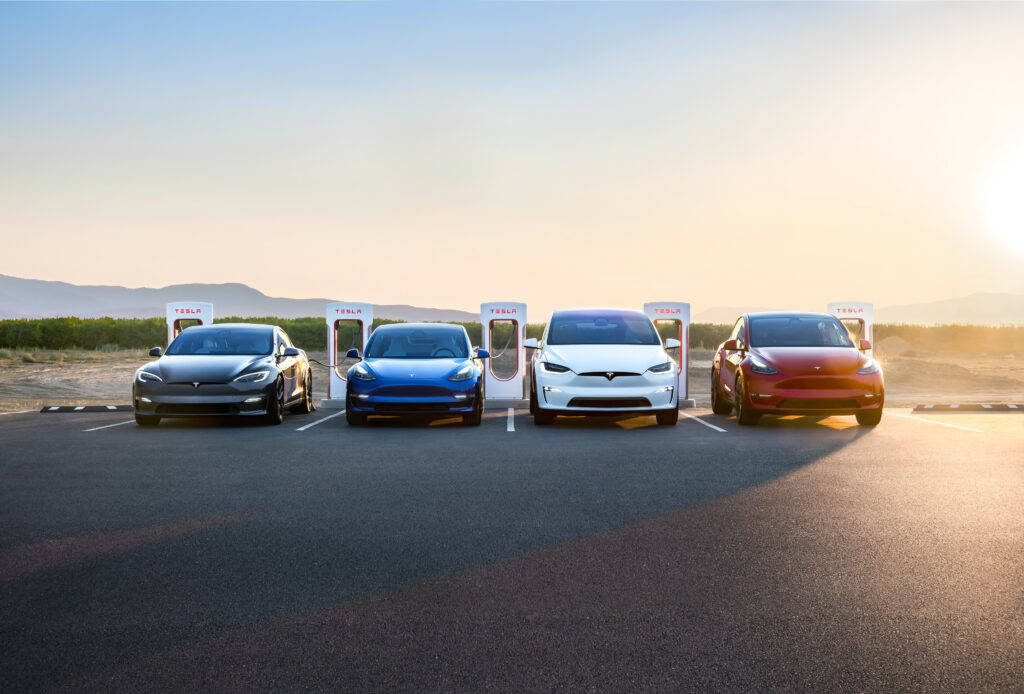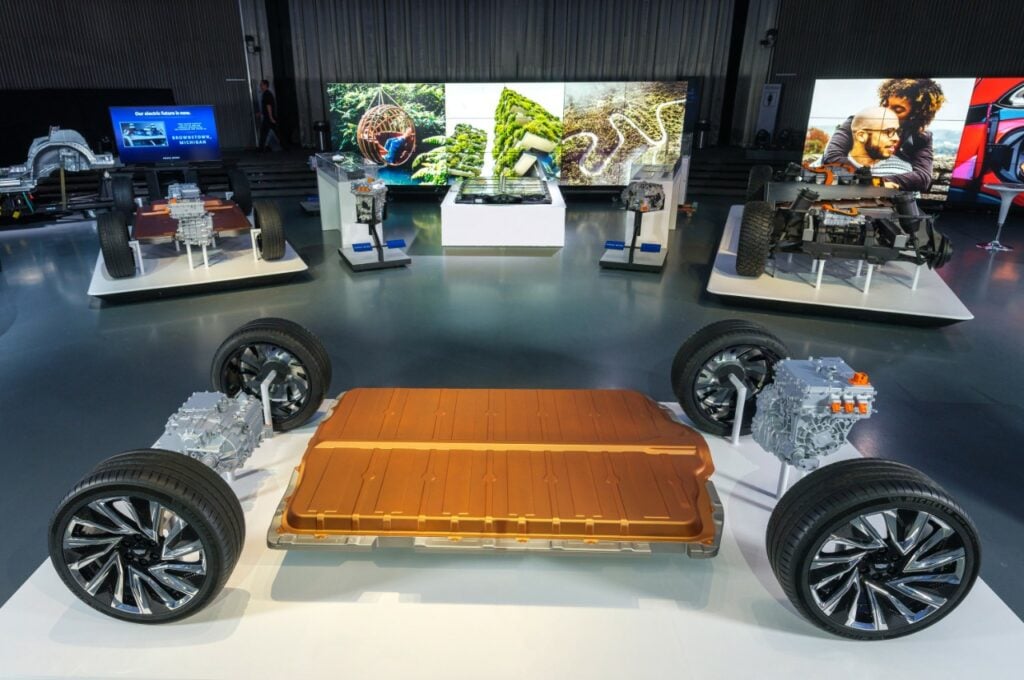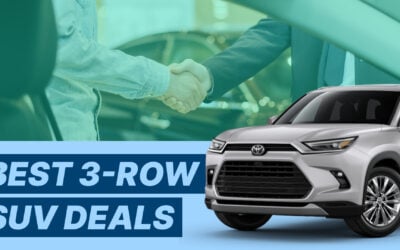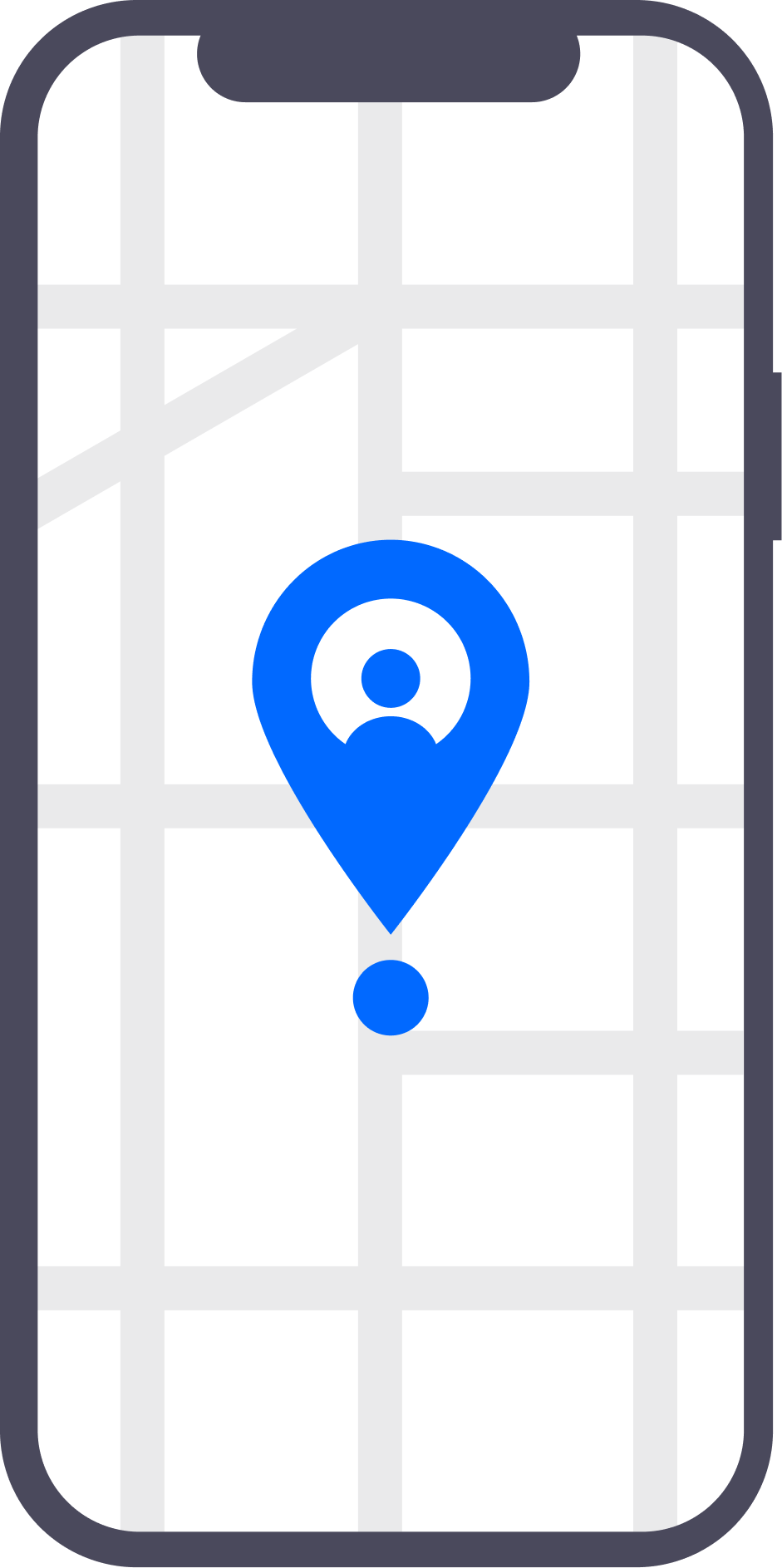
DC chargers, EVSEs, kilowatts and kilowatt-hours, a whole dictionary of new words, units and ownership experiences awaits first-time electric vehicle adopters. There’s a real learning curve that comes along with owning and operating an electric vehicle. Even if you plan to get every last mile out of your favorite combustion engine, the electric floodgates are open, and every automaker is making the switch.
There’s a lot to cover. You could read this valuable resource like a book, or better yet make use of the table of contents to skip around. These are the electric car terms you’ll be hearing a lot more of in tomorrow’s auto market. Did we miss any? Let us know!
A Better Route Planner
This is the preferred planner used for road trips in electric vehicles. A Better Route Planner is fully-customizable, making charging stops much easier to plan.
AC charger
AC stands for alternating current. Electricity supplied by the power grid is AC, yet electric vehicles need direct current (DC) to charge the battery. The “onboard charger” built into the vehicle converts power from AC to DC and then feeds it into the car’s battery. Charging at home will convert AC from the power outlet into DC in the car.
Amps
Amperes, or amps, are the base unit of electric current. Current is the speed or rate at which the electrons flow through a conductor, such as copper wire in a charging cable. Charging an EV from a basic level one 110 volt wall outlet provides around 12 amps of electricity current. Stepping up to a level two home charger (240 volt dryer outlet) sends around 32 amps to the car. Level three DC fast chargers supply over 100 amps.
Auto hold
This allows the vehicle to come to remain at a complete stop with the foot off of the brake. Auto hold is an essential part of one-pedal driving.
Asynchronous or induction motor
Some EVs are powered by asynchronous motors, which are cheaper to produce than permanent magnet motors. Most modern electric vehicles are powered by permanent magnet motors due to their higher efficiency and improved power generation.
Autonomous driving

Great news! CarEdge published an entire guide to autonomous vehicles. There are different levels of autonomous driving. The lower levels are basically cruise control and lane centering. Advanced autonomy permits the driver to take hands off of the steering wheel. Fully autonomous cars don’t require the driver to pay attention at all, and can travel anywhere at a moment’s notice.
Battery buffer / usable battery
EV batteries don’t drain all the way to their true 0% state of charge. Doing so often would permanently damage the battery. Instead, all batteries are engineered to have a buffer. For example, a 82 kWh battery may only have 77 kWh of usable battery. The rest is the buffer. Some automakers send over-the-air updates to electric vehicles that can increase driving range by reducing the battery buffer.
Battery cells
You know the AA or AAA batteries in household electronics? Those are battery cells. Modern EV battery packs are made of several modules (sealed encasings) containing thousands of individual battery cells. Different battery form factors are used, depending on the engineering of the battery technology. The form factor is basically the shape and size of the battery cell.
Battery degradation
All batteries lose the capacity to hold power over time due to wear and tear. For the time being, it’s an unavoidable characteristic of battery chemistry. However, battery chemists and engineers are always looking for ways to extend battery life and improve durability. Modern EVs are known to retain over 90% of the original battery capacity and range after 100,000 miles. Many Teslas on the road today have gone well over 200,000 miles on the same battery pack.
Battery management system (BMS)
Think of the BMS as the ’brain’ of the car’s battery. The EV battery management system ensures the optimized and safe operation of the battery, carefully monitoring and adjusting the temperature, power output and charging intake at all times.
Battery module
An EV battery module is made of several battery cells arranged and secured into a frame so that it becomes one unit. Battery packs contain several battery modules, which contain thousands of individual battery cells. For example, the Tesla Model 3’s 7,920 battery cells are arranged into five battery modules within the battery pack.
Battery pack

In an electric vehicle, the battery pack contains the individual battery cells and components. In modern EVs, the battery pack lies under the floor of the car, encased in a reinforced, waterproof case that is designed to withstand severe abuse from road debris, off-roading or accidents.
Battery preconditioning
Battery preconditioning prepares an electric vehicle’s battery for fast charging. DC fast chargers supply more power to the battery when the battery is functioning at ideal temperatures. If a battery is still relatively cool, battery preconditioning may automatically warm up the battery to the optimum temperature when the car’s navigation system is navigating to a charger. Preconditioning capability can save drivers time at the charging station.
BEV
Some refer to fully-electric vehicles as ‘battery electric vehicles’, or BEVs. The term is used to separate plug-in hybrid vehicles (PHEVs) from fully electric vehicles.
CCS plug
The CCS connector is now the most common charging connector in North America. It’s the closest thing to a ‘standard’. It uses the J1772 charging inlet, and adds two more pins below to make faster charging possible. General Motors (all divisions), Ford, Chrysler, Dodge, Jeep, BMW, Mercedes, Volkswagen, Audi, Porsche, Honda, Kia, Fiat, Hyundai, Volvo, smart, MINI, Jaguar Land Rover, Bentley, Rolls Royce and others use the CCS plug.
CHAdeMO plug
Japanese brands continue to use the CHAdeMO connector, despite all other automakers abandoning this charging connector type. In North America, the only manufacturers currently selling electric vehicles that use the CHAdeMO connector are Nissan and Mitsubishi. The Nissan Leaf and the Mitsubishi Outlander plug-in hybrid are the only EVs that use the CHAdeMO charging connector type. Electrify America stations typically have one CHAdeMO plug.
Charge port

This is where the EV charger is plugged into the car. In some models, the charge port is located where the gas cap is located on traditional cars, but it may be located on the front grille or above the front wheels on some EVs.
ChargePoint
ChargePoint is a popular charging station provider. Many ChargePoint stations are located in parking lots at shopping centers.
Charging adapter
Adapters make it possible to charge a vehicle with an incompatible charge port. For example, Tesla vehicles all come with a Tesla plug, which is different from the common CCS plug that Volkswagen, Ford, GM and others use. A charging adapter can be purchased and attached to solve this plug mismatch. It’s wise to keep an adapter in the vehicle when traveling.
Charging station
This is where EV drivers charge up their batteries on road trips, or if they don’t have the ability to charge at home. Charging speeds determine the amount of time drivers spend at a charging station. Older DC fast chargers peaked at 150 kilowatts, but newer charging stations are capable of charging cars at 350 kilowatts. Most charging stations are located in grocery store or gas station parking lots. In the US, a new national charging network is under development to bring charging stations to every corner of America.
DC fast charger
DC stands for direct current. A DC charger converts alternating current (AC) from the power grid into direct current inside the charger itself. DC chargers are often called ‘fast chargers’ because this makes it possible to feed much more electricity to the battery much faster. Charging in America is about to get a lot easier.
Dual motor
In electric vehicles, a dual-motor setup enables all-wheel drive. Electric motors are only a tad larger than a basketball, so they can easily be placed on each axle. In fact, high-end EVs often have three motors (tri-motor) or even four motors (quad-motor). Often, dual-motor EVs operate with just the rear motor until additional acceleration or traction is needed.
Eco mode
Most electric vehicles include an eco mode, which activates efficiency measures to reduce battery consumption and prolong driving range.
Electrify America

Electrify America is a large and rapidly growing operator of charging stations in the United States. It was established as a result of Volkswagen’s dieselgate emissions scandal. An average of four EA stations were opened every week since the official debut of Electrify America in May of 2018. Now, EA is embarking on the next stage of growth.
EV tax credit
The current electric vehicle federal tax credit saves EV buyers $7,500 on their tax bill, so long as they owe at least that much in federal tax liability. In 2022, US lawmakers are considering an expansion to the EV tax credit, possibly up to $12,500 for some models. As of 2022, all automakers except Tesla and GM still qualify for the credit, which phases out after sales surpass 200,000. Learn more here.
EVSE
Electric Vehicle Supply Equipment (EVSE) supplies charge to the vehicle and controls communication between the car’s battery management system and the charger. EVSE includes the charging cable, connector type, and communication infrastructure between the vehicle and the charger.
Frunk
What do you call a front trunk? A frunk, of course! Not all EVs have a frunk, but Tesla models are known for their generous frunk sized. Electric trucks have massive frunks.
ICE car
In the automotive world, ICE stands for internal combustion engine. In other words, old-fashioned, fossil fuel-burning vehicles.
ICE’d (verb)
When you pull up to a charging station only to find that it is blocked by an ICE car, you’ve been ICE’d. It’s a real problem when there are no other chargers available, and just annoying in general.
J1772 connector
Every electric vehicle sold in North America can use any charging station that comes with the standard J1772 connector. Every non-Tesla level 1 or level 2 charging station sold in North America utilizes the J1772 connector. CCS chargers are a modified version of the J1772 connector.
Kilowatt (kW)
One kilowatt equals 1,000 Watts. A Watt is a unit used to quantify the rate of energy transfer. Your home microwave uses 1,000 Watts, and an electric motor uses 100 to 300 kilowatts (100,000 to 300,000 Watts). EVs consume a lot of power, so power usage and charging rates are measured in kilowatts. DC fast chargers use 150 to 350 kilowatts.
Kilowatt-hour (kWh)
The kilowatt-hour is a unit of energy equal to one kilowatt of power used or supplied for one hour. The kWh unit is most often used with regards to battery capacity. Modern electric vehicle batteries typically have a capacity between 58 kWh and 125 kWh.
Kilowatt-hours per 100 miles
This is the preferred unit of measuring EV efficiency in Europe. In the United States, miles per kilowatt-hour is the most common unit of measuring efficiency.
Level 1 charger
Level one charging is simply plugging into a standard wall outlet that supplies 110 volts. This is the most affordable charging option, as no installation or accessories are required. However, it is very slow. Often called ‘trickle charge’, level one charging is best for plugging in overnight. It may take 12 to 24 hours to fully charge, depending on the state of charge when plugging in. Here are five common myths about charging at home.
Level 2 charger
Level two EV chargers use a 240-volt dryer outlet to draw more power, and therefore to charge the car more quickly. Installation of a level two charger costs on average $700 – $1,500, but local, utility and state incentives can reduce the total cost. A level two charger can fill most EV batteries from empty in under 8 hours, adding between 18 and 30 miles of range per hour. Here are five common myths about charging at home.
Level 3 charger

Level 3 chargers are known as DC (direct current) fast chargers. These are the quickest, most powerful chargers. In the United States, Electrify America and Tesla Superchargers are the most widespread level three charging networks. Depending on the vehicle model, a level three charger can fill an electric vehicle battery in 20 to 50 minutes from a low state of charge. Here’s how much it costs to charge at a level 3 charger.
Lithium-ion battery
For the time being, all electric vehicle batteries are made of lithium, a rare earth mineral known for high energy density, durability and rechargeability. Other rare minerals and chemicals are also included in the composition of EV batteries, such as nickel, cobalt, iron and phosphate. Lithium is mined from rock deposits.
Miles per kilowatt-hour (mi/kWh)
In the United States, miles per kilowatt-hour is the most common unit of measuring efficiency. It serves the same purpose as ‘miles per gallon’ with combustion vehicles.
MPGe
Miles per gallon equivalent (MPGe) is one of the units used to characterize the efficiency of an electric vehicle’s battery and electric motor powertrain. One kilowatt-hour (kWh) of electricity contains the same amount of energy as one gallon of gasoline. MPGe is how many miles the electric vehicle can drive on 33.7 kWh of electricity. It is primarily used in the United States. Most electric vehicles get between 90 MPGe and 125 MPGe.
Onboard charger
Electric vehicles contain a built-in ‘onboard’ charger that converts AC power from the grid into a DC voltage that is used to charge the battery pack in the vehicle. Level one and level two charging at home is supplied by alternating current (AC) from the grid, however direct current (DC) fast chargers at Electrify America, Tesla Superchargers and others supply direct current directly to the vehicle.
One-pedal driving
What is one pedal driving? One pedal driving is when an electric vehicle combines regenerative braking and auto hold capabilities to make driving with just the accelerator pedal possible in most situations. With one-pedal driving, the brake pedal is only applied when the need arises to quickly slow down. When ‘creep mode’ is engaged (or the default setting), the car will creep forward when the foot is not on the brake, much as ICE cars do.
Over-the-air (OTA) update
With OTA capability, vehicles can receive enhanced performance and safety improvements via a simple wireless internet connection. Some EVs, such as Tesla vehicles, have received OTA updates that actually increase their driving range or charging speed. CarEdge’s guide to OTA updates covers everything you need to know about this feature.
Permanent magnet motor

Most modern EVs are powered by highly-efficient, compact permanent magnet motors. Previously, the rare earth minerals needed to make permanent magnet motors were too expensive, but significant improvements in affordability and engineering have made this the gold standard for EV motors.
Plug-in hybrid (PHEV)
Plug-in hybrid vehicles (PHEVs) contain an electric motor and a gasoline-powered combustion engine. Most PHEVs can travel 20 to 30 miles on pure electricity before they begin to use the hybrid combustion engine for the remainder of the journey. PHEVs can be charged at a charging station, but they don’t require charging. However, PHEVs do contain far more mechanical components than a true EV, and therefore may eventually require more maintenance.
The PlugShare app is the go-to resource for electric vehicle owners when traveling. PlugShare’s map displays over 440,000 EV charging stations worldwide. The Trip Planning feature makes it quick and easy to plan out charging stops along any journey, and it’s fully customizable. This resource is especially useful when driving an EV into a rural area.
Range
EV range is how many miles a vehicle can travel on a single charge, or remaining charge. Most electric vehicles are rated for somewhere between 250 and 350 miles of range on a full charge. In the United States, the EPA rates the official range based on a standardized driving course. Unlike internal combustion vehicles, EVs get better range in urban driving. For example, a Volkswagen ID.4 may get 230 miles on the highway at 70 mph, but nearly 300 miles of range when driving around town.
Electric vehicle range is always emphasized, but not at the fault of the car itself. Infrastructure is slow to catch up, and many parts of America remain charging deserts. Fortunately, public-private partnerships are coordinating the installation of a national charging network that will reach every corner of the United States by mid-decade. Charging in America will soon become much easier.
Regenerative braking
This is one of the superpowers of electric cars. Rather than letting all of the force applied by the brakes go to waste, EVs recapture some of the power through regenerative braking. How does regenerative braking work? When decelerating to slow down, the wheels drive the electric motor and convert kinetic energy from movement into potential energy to be stored in the battery pack. This is why EVs can actually gain significant driving range when cruising down a steep mountain. If a Tesla Model Y has 50% state of charge at the top of the mountain, it may have 55% by the time it reaches the valley below.
Solid state battery
Solid-state batteries replace the liquid electrolyte found in other batteries with a solid electrolyte. The electrolyte is the part of the battery that is commonly known as battery acid. It conducts electricity between the cathode (negative terminal) and anode (positive terminal).
In essence, most of today’s batteries are ‘wet batteries.’ Solid-state batteries are ‘dry’, and with that comes many benefits, but also some new challenges. Affordability and the ability to withstand thousands of charging cycles remain the engineering challenges of solid state battery development. Several automakers are currently working on solid state development with hopes of producing EVs with much greater ranges and faster charging. Learn more about this technology at the CarEdge guide to solid state batteries.
State of charge
How much charge is left in the battery? That’s the state of charge, usually displayed as a percentage. Some EV models display miles remaining by default, but most have the option for viewing the actual remaining battery percentage.
Supercharger

The Tesla Supercharger network is the largest charging network in the world, with over 30,000 chargers around the world. Version three (V3) superchargers supply up to 350 kilowatts of electricity to EVs, making it possible to charge up in as little as 20 minutes. The Tesla Supercharger network is only available to Tesla vehicles. Costs average around $0.28 per kilowatt-hour of electricity. Therefore, most Tesla cars will spend around $10 – $15 charging to full, gaining around 250 – 300 miles of range. Learn more about how much it costs to charge an electric car with our CarEdge guide to charging.
Tesla plug
Tesla vehicles have a proprietary Tesla connector that accepts all voltage, so there’s no need to have a different connector specifically for DC fast charge. Only Tesla vehicles can use their DC fast chargers, called Superchargers. Be sure to check out the other plug types in the electric vehicle dictionary.
Turtle mode
When an electric vehicle’s battery gets to a very low state of charge (often under 3%), the EV will have limited acceleration and even a limited top speed if the state of charge drops below 1%. It is important to avoid letting the battery drain this low often, as it can affect the long-term health of the battery.
Usable battery
All electric vehicle batteries contain a buffer, or unusable portion of the battery capacity. This is meant to preserve the longevity and health of the battery. Draining a battery entirely damages the internal components. Usable battery is the portion of the overall battery capacity that is accessible during normal operation. For example, the Ford Mustang Mach-E has a 98.8 kWh battery pack, but 91 kWh usable capacity. The rest serves as the buffer.
Vehicle-to-load (V2L)
The latest generation of electric vehicles are capable of powering home electronics, charging other cars, and even powering an entire home. This feature is known as vehicle-to-load, or V2L. The Hyundai IONIQ 5 and Kia EV6 are both capable of vehicle-to-load transmission. It’s a great feature for avoiding the disruptions caused by utility power outages. You can even power an outdoor party (or campsite).
Volts
Think of voltage as the pressure from an electrical circuit’s power source that pushes electrical current through a wire, such as an EV charging cable. Amps multiplied by volts equals watts, which is the measurement used to determine the amount of energy. Most existing EV models are built with 400 V charging infrastructure, however newer models like the Hyundai IONIQ 5, Kia EV6 and Porsche Taycan use next generation 800 V architecture. The result is much faster charging.
Watt-hours/mile (Wh/mi)
There is a close relationship between watts, amps and volts. Amps multiplied by volts equals watts, which is the measurement used to determine the amount of energy. In the United States, the energy consumption of an electric vehicle is most often measured in watt-hours per mile, which is how much energy would need to be sustained for one hour for the vehicle to travel one mile. Highly efficient EVs average under 350 watt-hours per mile (Wh/mi).
Did we miss anything in our electric vehicle dictionary? Let us know in the comments!
Don’t forget to check out the new CarEdge Car Search, where you can find new and used vehicles listed for sale with unique industry insights that dealers don’t want you to see! You can even filter for electric vehicles. See the CarEdge electric car listings here.













0 Comments